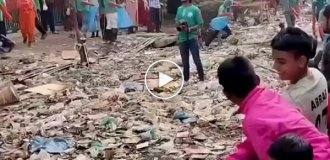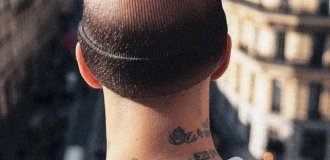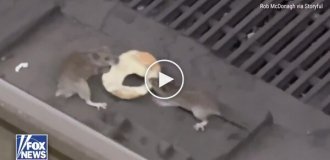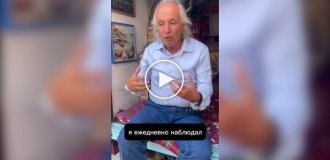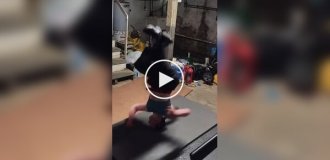Until recently, the drug trade in the slums of Mandela was particularly brisk. By the light of a dim light bulb, people put cocaine and marijuana into packages and sold them for prices ranging from $5 to $25. Teenagers with semi-automatic weapons in their hands made money on this, girls from the slums were constantly spinning next to them. Nearby, children jumped on a trampoline, completely oblivious to weapons and drugs, because they are here and in hundreds of other slums of Rio, where more than 12 million people live, this is a simple routine. The most popular drug among the population of the favelas is crack. He appeared here about six years ago, after which Mandela and the surrounding slums became the main open drug market in Rio called "cracklandia" or "crackland", where you could freely buy crack, smoke and spend time. Crowds of drug addicts lived in cardboard shacks and covered themselves with dirty blankets, fighting for money and influence. 
But now you can no longer see crack on wooden table prepared for sale, and even drug addicts. These changes are not related to the activities of the police or the public campaign for a healthy lifestyle. The dealers themselves stopped selling drugs in Mandela and Jacarezinho and assured that there would be no more trafficking for at least the next two years.
Local drug bosses, who typically were born and raised in slums and later became local community kingpins, say the spread of crack and other similar drugs is destabilizing communities, further complicating control over them. However, law enforcement and city officials believe that the drug gangs are only trying to create the illusion of giving up crack in order to mislead them and take control of the slums again.

1. A slum dweller smokes crack in the Manginos favela in Rio de Janeiro, Brazil on August 7, 2012. (AP / Felipe Dana)

2. Crack lovers gather under a bridge in the Antares slum in Rio de Janeiro on August 8, 2012. (AP / Felipe Dana)

3. Traders and shoppers gather near a drug dealer in the Antares slum in Rio de Janeiro August 8, 2012. (AP / Felipe Dana)

4. Selling drugs in the Antares slum in Rio de Janeiro on August 8, 2012. (AP / Felipe Dana)

5. Small drug dealers pack drugs in small doses for retail sale. The picture was taken in the Antares favelas on August 8, 2012. (AP / Felipe Dana)

6. Flavia Froes, a lawyer who heads the NGO Anjos da Libertade, talks to a drug dealer in the Antares slum on August 8, 2012. (AP / Felipe Dana)

7. A woman smokes crack in the Antares slum on August 8, 2012. (AP / Felipe Dana)

8. A man smokes crack near the Manginos slum in Rio de Janeiro on August 12, 2012. (AP / Felipe Dana)

9. A drug dealer checks out his new rifle in the Mandela slums on August 11, 2012. (AP / Felipe Dana)

10. A masked dealer with guns at a drug dealer that no longer sells crack in Mandela on August 11, 2012. (AP / Felipe Dana)

11. 15-year-old Natalia Gonzalez, who regularly smokes crack, in the slums of Manginos on August 7, 2012. (AP / Felipe Dana)

12. People gather in a "crackland" in the slums of Manginos on August 7, 2012. (AP / Felipe Dana)

13. Young people smoke crack in a hut in the slums of Manginos on August 7, 2012. (AP / Felipe Dana)

14. Crack smokers near the slums of Manguinhos on August 12, 2012. (AP / Felipe Dana)
 15. A crack smoker leaves a drug dealer near the Manginos slum in Rio de Janeiro on August 12, 2012. (AP / Felipe Dana)
15. A crack smoker leaves a drug dealer near the Manginos slum in Rio de Janeiro on August 12, 2012. (AP / Felipe Dana)




